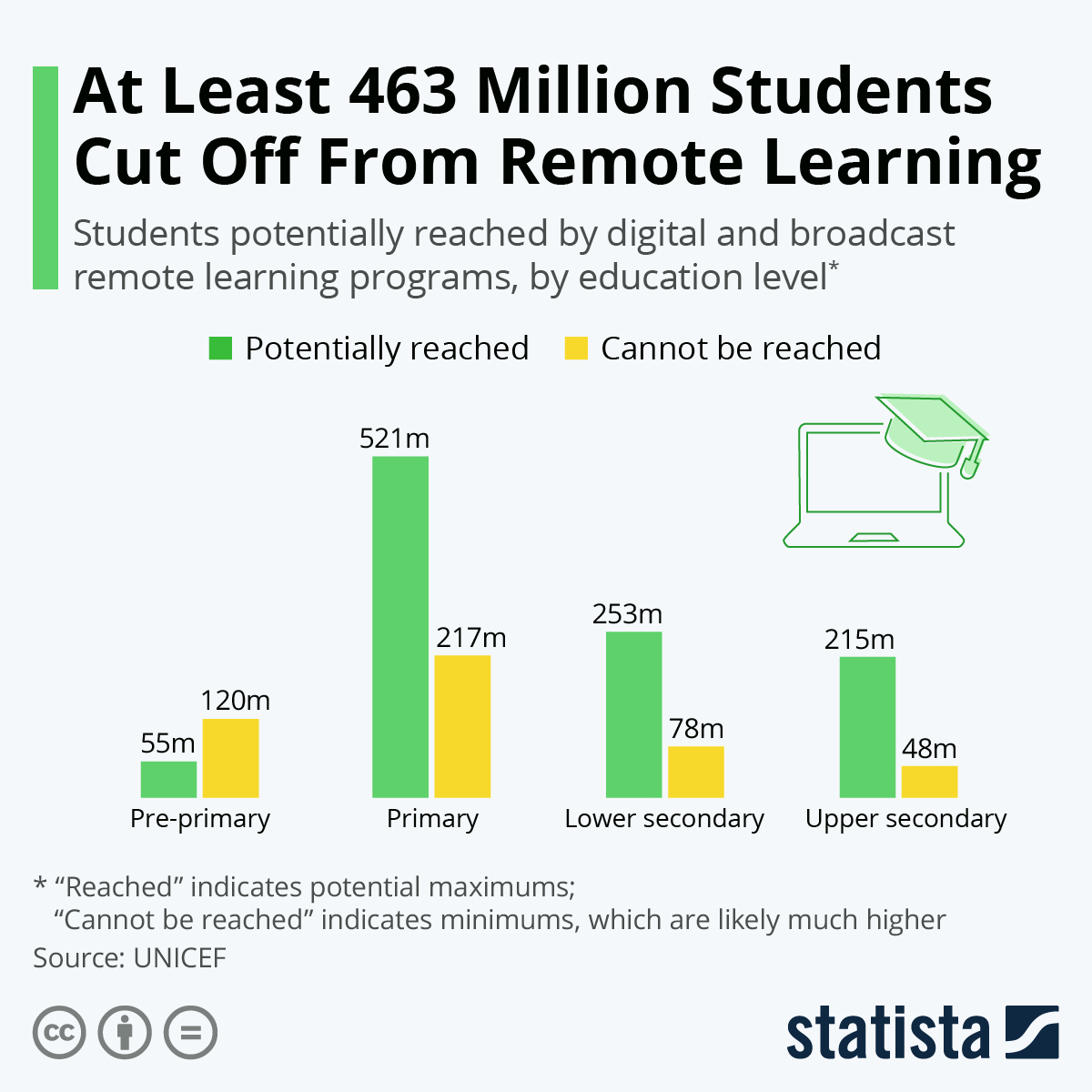September 5, 2020
The Remote Learning Accessibility Crisis

By: burgundy bug
Graphic illustration of students attending a virtual class
Source: Envato Elements
Whether you love your Zoom classes or loathe them, we need to touch upon the elephant in the room: at least 463 million students are cut off from online learning worldwide.
Fueled by global socioeconomic inequities, a recent UNICEF report illustrates how this accessibility crisis doesn’t discriminate.
Students of all ages are unable to reach remote learning platforms because they lack the devices and infrastructure needed to implement them.

An infographic that depicts how many students can’t access online learning
Source: At Least 463 Million Students Cut Off From Remote Learning | Statista
Primary students — those in grades K-6 (a.k.a. elementary school here in the States) — are hit the hardest, with at least 217 million children unable to access education amidst the pandemic.
“Students in rural areas consistently represent the vast majority of those who cannot be reached by any of the three remote learning modalities analyzed, irrespective of the country’s level of economic development,” the UNICEF report states. “Overall, three out of four students who cannot be reached live in rural areas, but in lower-income countries the percentage is even higher.”
Students facing the most economic-hardship in lower-income countries represent 47 percent of those who can’t be reached.
The countries with the least access to remote learning for their students — either due to a lack of technology or lack of policies supporting virtual — include:
- South Asia: 147 million students can’t be reached
- East Asia and the Pacific: 80 million students can’t be reached
- Eastern and Southern Africa: 67 million students can’t be reached
- Western and Central Africa: 54 million students can’t be reached
- Middle East and North Africa: 37 million can’t be reached
- Eastern Europe and Central Asia: 25 million can’t be reached
- Latin America and the Caribbean: 13 million can’t be reached
Solving Remote Learning Inequities
As we’ve seen with the tribulations schools reopening over the last few weeks, the answer doesn’t lie in sending all these children back to brick and mortar education. It’s just not practical during a global pandemic.
Instead, we need to find other ways to make sure no child gets left behind.
The UNICEF report describes how many countries have adopted educational television and radio broadcasts to supplement for online classes.
This helps increase the reach of remote learning, but it isn’t enough. Many of these students don’t have televisions or radios to receive the broadcasts.
Solving the problem starts with raising awareness. While students here are hemming and ho-ing (for good reason) over school closures (which are remaining closed for a good reason, too), we need to shed light on how many students don’t have the privilege of attending Zoom classes from their computers and taking notes on their iPads.
Policy changes need to occur as well, but these take time. And not every country has a First Amendment right or democratic society.
In the here and now, we need to pull together resources:
- Donate to organizations that strive to increase remote learning accessibility
- Donate the radios and televisions collecting dust on our shelves to those who could benefit from them (just make sure they still function first)
- Hold technology and education drives — for example, have the community donate unused homeschooling materials or old technology that other students could benefit from
If you know of any organizations involved in these activities or have other solutions to the education accessibility crisis afflicting children around the world right now, contact us.
We would be honored to share those resources with our audience and encourage them to share those resources within their own circles, as well.
Interested in having content featured in an upcoming blog post or issue of The Burgundy Zine? Head on over to the submissions page!
For all other inquiries, please fulfill a contact form.


